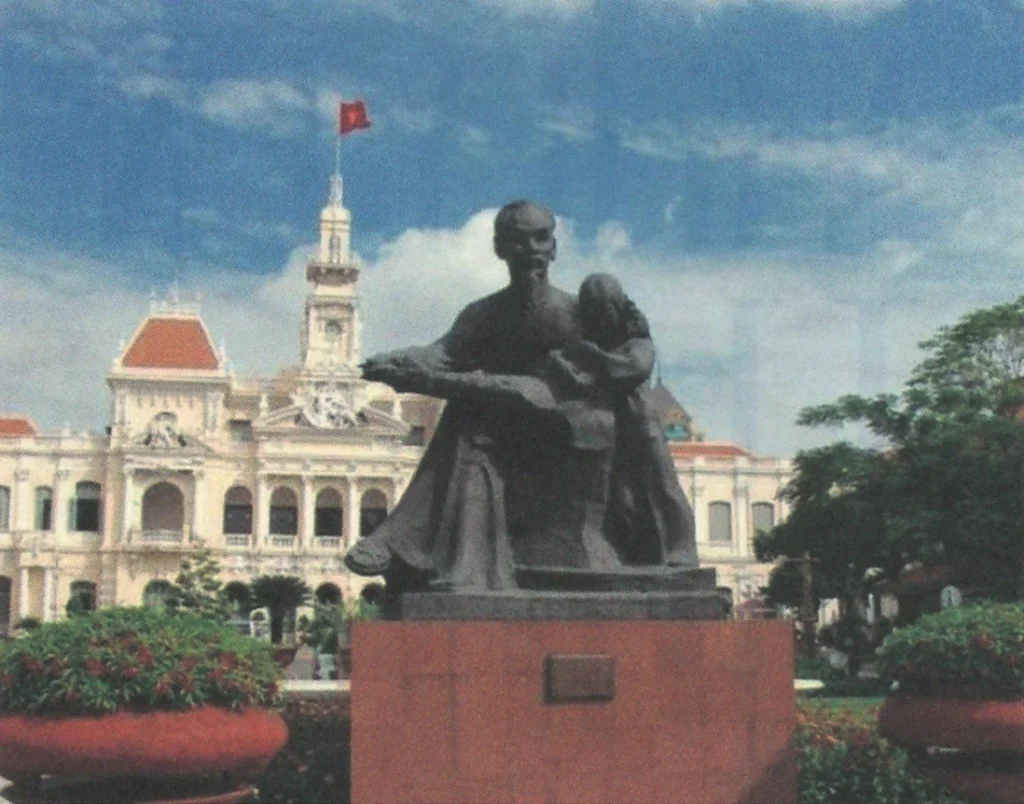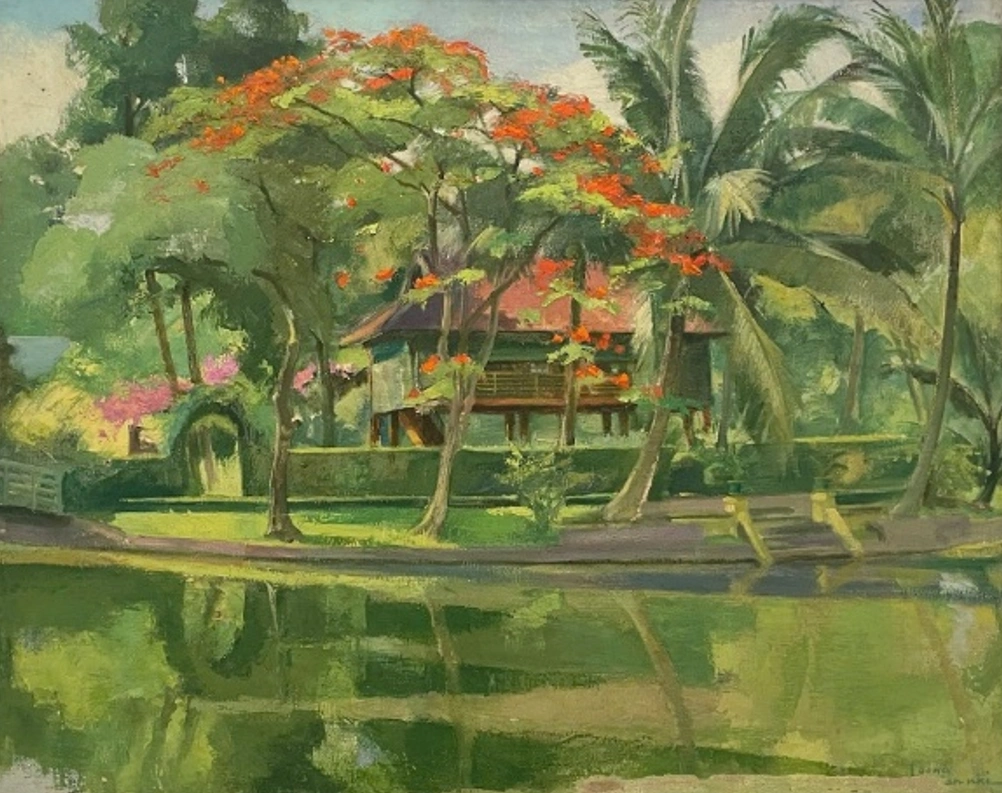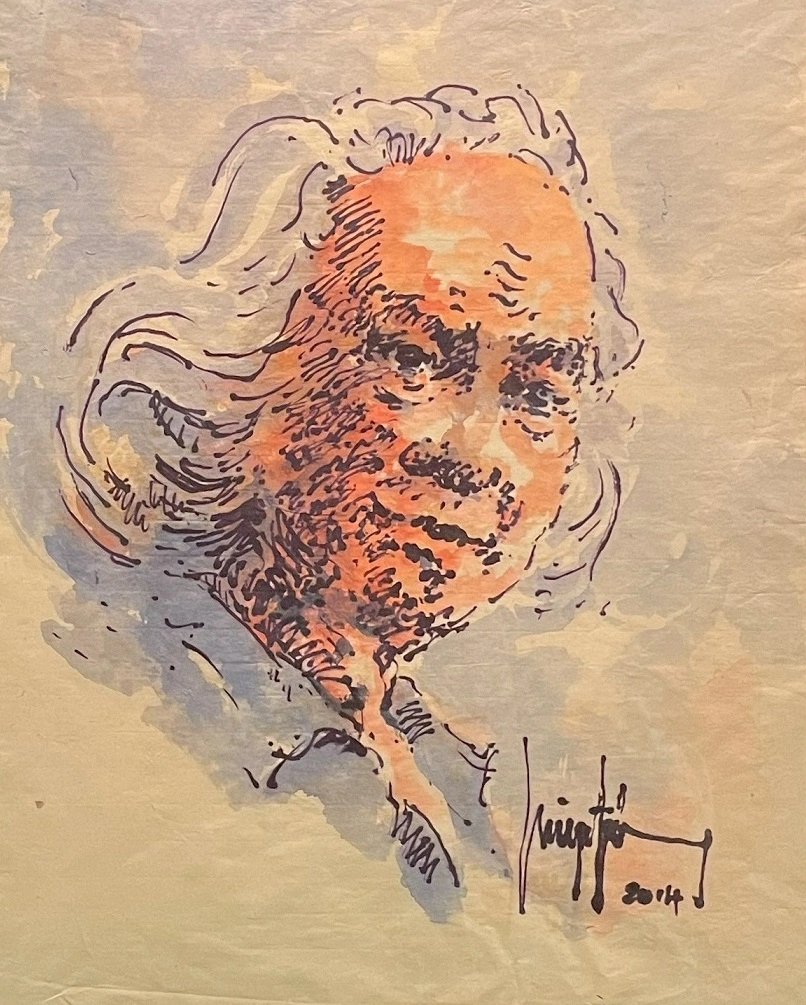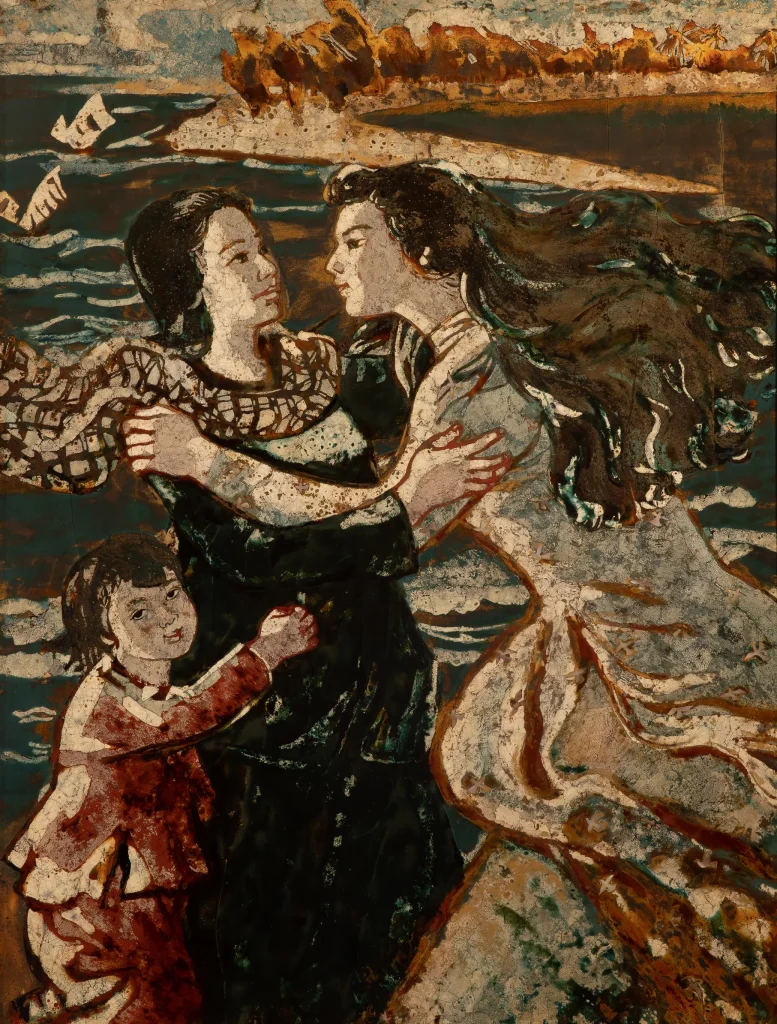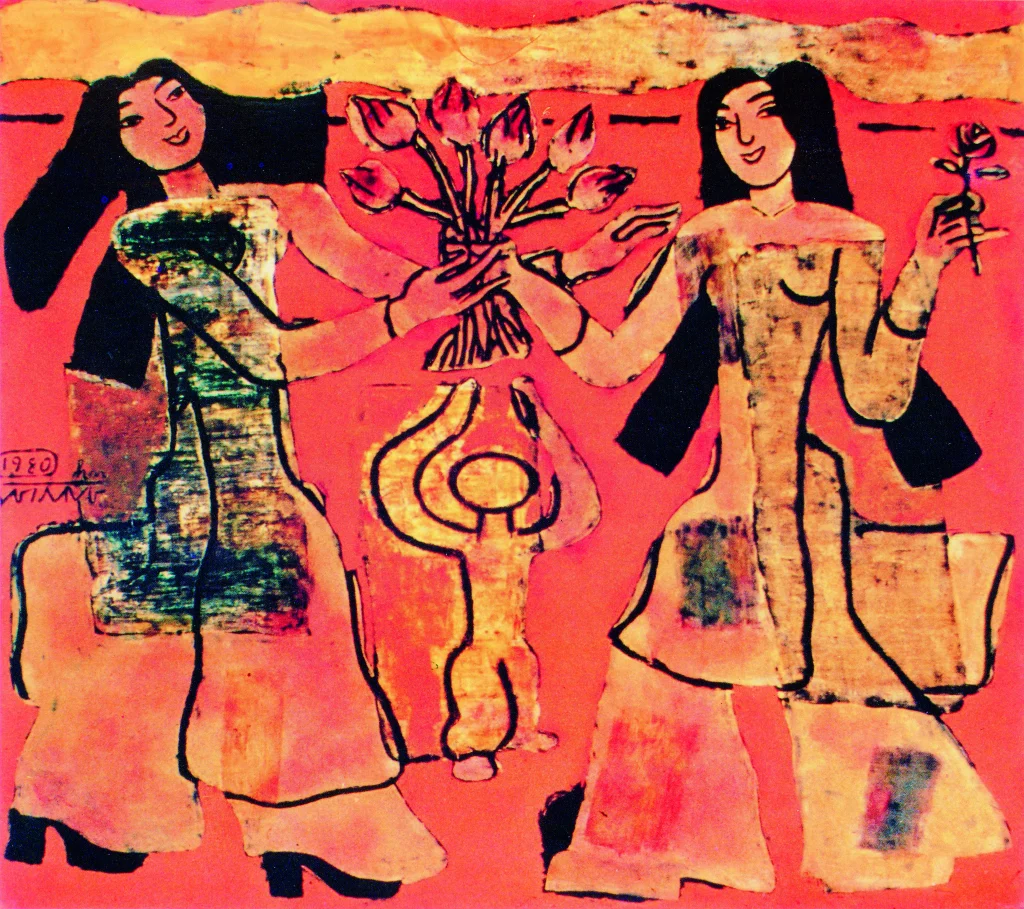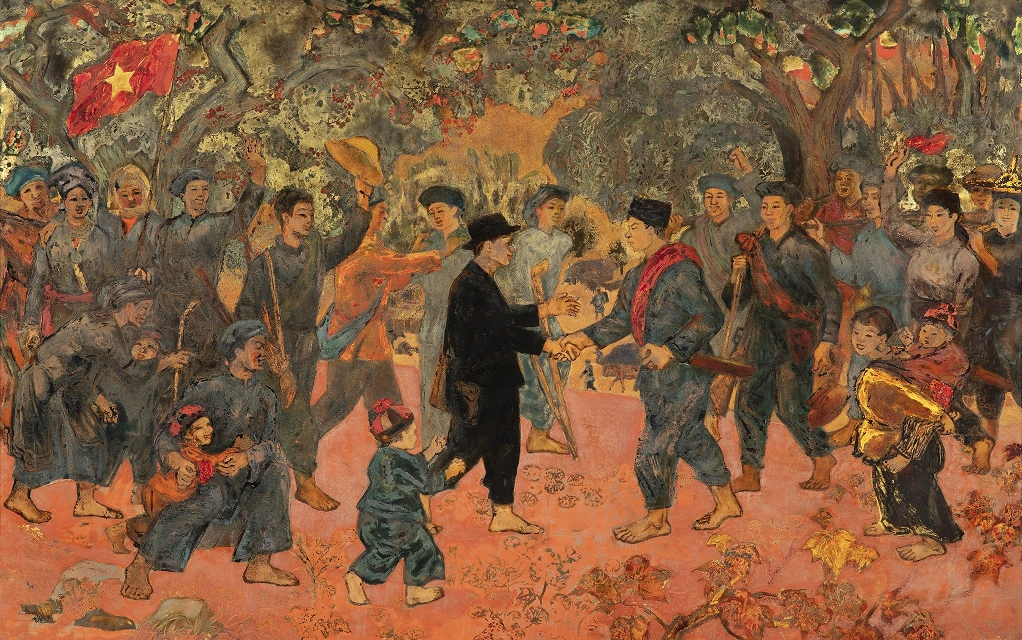From the Liberation of Hà Nội Capital in 1954
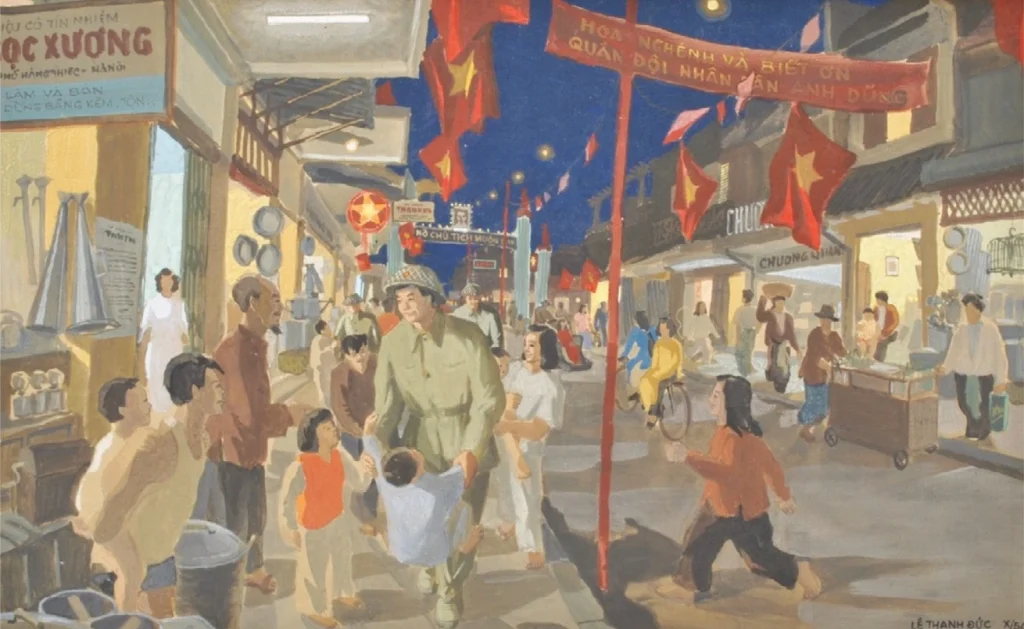
LÊ THANH ĐỨC (1925-2004). HÀ NỘI THE NIGHT OF LIBERATION. 1954. GOUACHE
In 1954, artist Lê Thanh Đức created the painting ‘Hà Nội Liberation Night 1954’. The work became an exemplary work on the theme of revolutionary war but there were no images of weapons, military vehicles or tragic losses. The painting depicts the first night of the liberation of Hà Nội in 1954 with people of Hà Nội from young to old joyfully and excitedly looking towards the central character, a young soldier, still wearing his military uniform. From the eyes, gestures, movements and postures of the characters to the street scene filled with light, red flags with bright yellow stars. The work exudes a space filled with joy and laughter, full of warmth and affection.
To the day of the liberation of the South and the reunification of the country on April 30, 1975
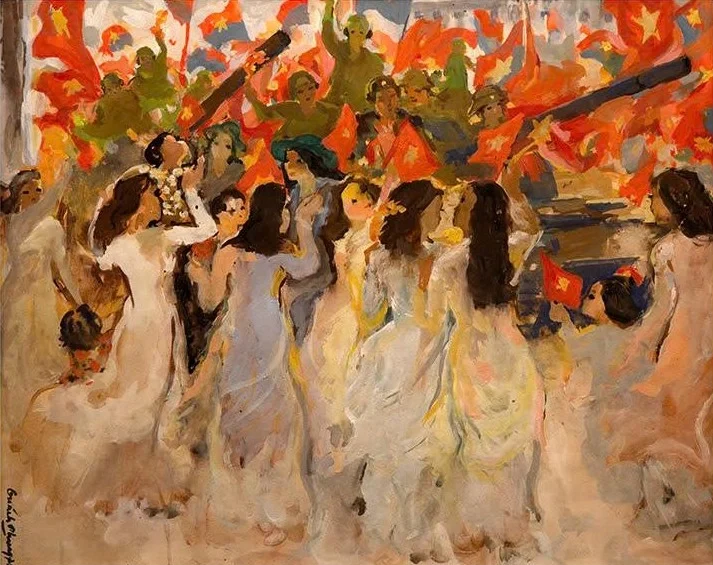
QUÁCH PHONG (1938). SUNSHINE OF MAY. 1975. GOUACHE. 38 ×49 CM
And 21 years later, in 1975, the Vietnamese people reached a new pinnacle of victory when they gained complete independence, the North and the South were united.
To be one of the people in Sài Gòn who witnessed the historic event of April 30, 1975 was a blessing, an honor and a pride. But as an artist, Quách Phong turned all of that into a strong creative motivation. On the very first night of the liberation of the South and the reunification of the country, he completed the painting ‘Sunshine of May’.
The Emotions of a Witness
The creation of a painting in one night is not simply a matter of speed, but a clear sign that the artist was in a state of heightened emotion.
The day of victory came, and like millions of people of Sài Gòn and compatriots across the country, artist Quách Phong could not sleep. Not because of anxiety, but because of the happiness that surging in his chest: The country was connected, the North and the South were now reunited, the country was completely unified, independent, and free.
And then on that historic April night, the painter did not “paint” in the usual way but “released his emotions” onto the paper. The brushstrokes were no longer constrained too much by reason or technique, but were completely controlled by the heart. The strokes were therefore urgent, flowing, as if writing a visual symphony with lines, shapes, and colors.
As a painter – soldier who lived and fought, who witnessed firsthand the losses, sacrifices, and separations caused by the war that lasted for decades, for Quách Phong, April 30 is not only a “victory day” but also a day to remember those who have fallen for what has been preserved.
Quách Phong chose to paint joy, reunion, youth, and light. Because, on the night of victory, he did not need to describe the war. He needed joy, needed a testament to the ideal that so people had lived for.
The ‘Sunshine of May’ is the sunshine in the artist’s soul
The ‘Sunshine of May’ in the painting is not ordinary sunlight – it is the light in the artist’s heart, the light that the artist – soldier Quách Phong cherished for years. When victory came, that light poured out, covering the painting with pure, clear, and hopeful emotions. The artist, when painting that night, seemed to be reliving his entire life, painting with the mindset of a patriotic artist telling the past: “We have come this far, not in vain.”
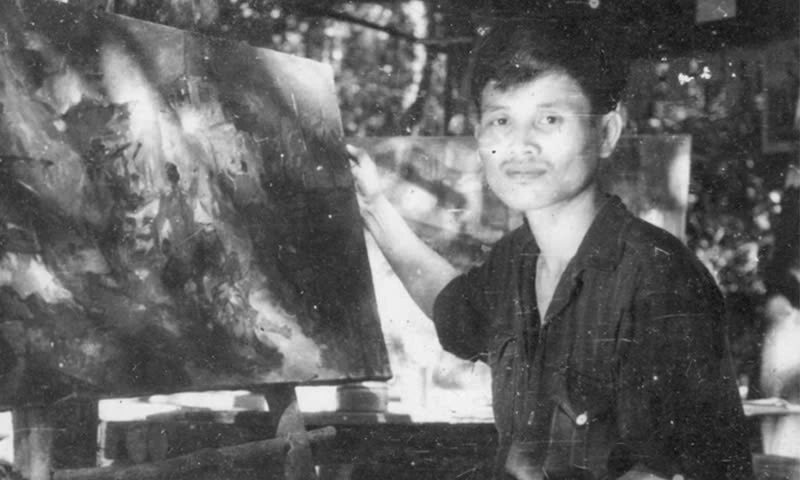
ARTIST QUÁCH PHONG
There was no commission. No one asked him to paint. But he could not help but paint. That is what makes the painting a testament to the soul, not just a work of art.
He did not look for details, did not try to paint each person’s face – because in him there was a feeling that everything was beautiful, everything was worth remembering. Therefore, the images of young women, soldiers, flags… are all symbolic, but as vivid as the historical moment he had just passed through.
The artist mainly used three colors, white – blue – red in the painting. The white of the students’ áo dài, representing the people, beauty, peace and the future. The army in green, the color of life, of hope. And the red of the national flag symbolizes the revolutionary ideal and victory.
The choice of gouache as the medium to express the work ‘Sunshine of May’ simply came from the context that the artist needed a technically suitable medium to quickly convey emotions.
Emotions come from the heart. And the artist, when painting with the heart, could preserve the moment of light of belief in victory of an entire nation – the light of peace in ‘Sunshine of May’.
WRITTEN BY VIET ART VIEW
COPYRIGHTS BELONG TO VIET ART VIEW


